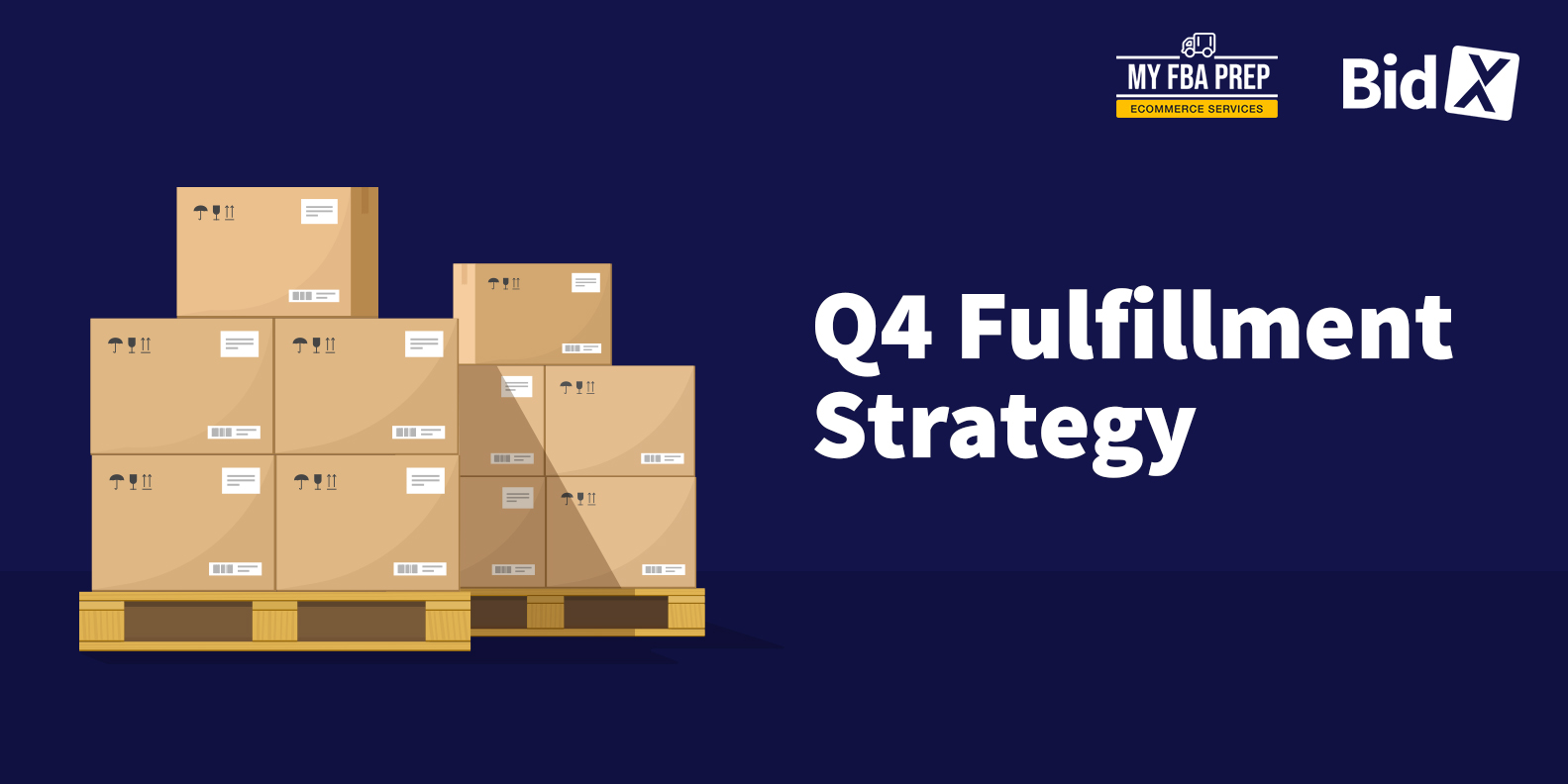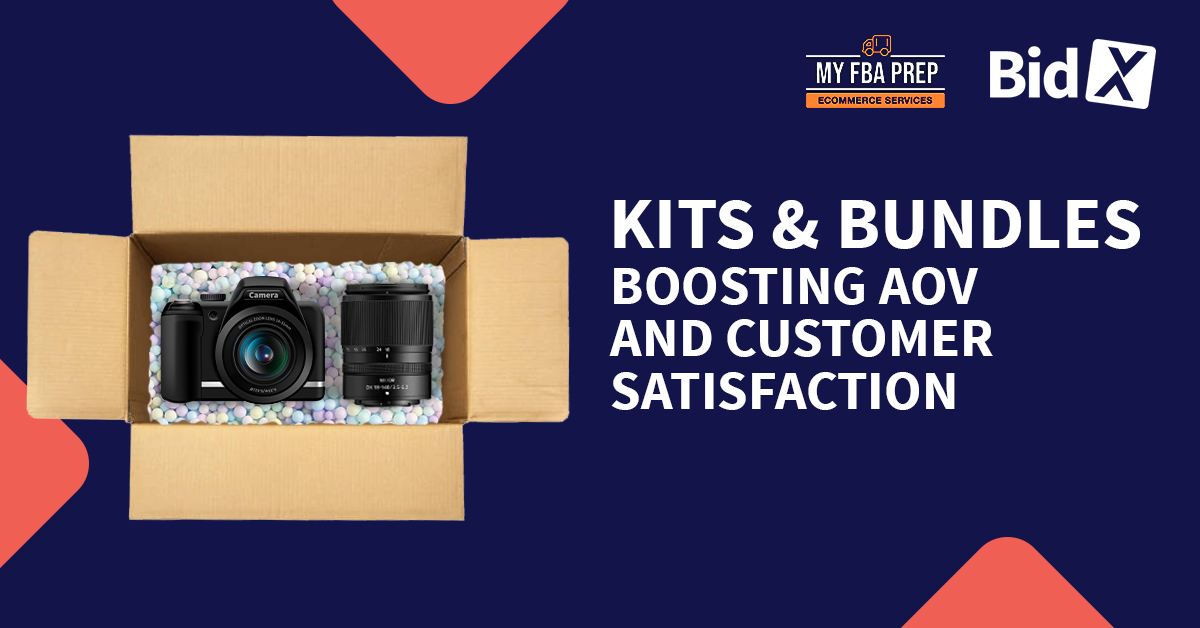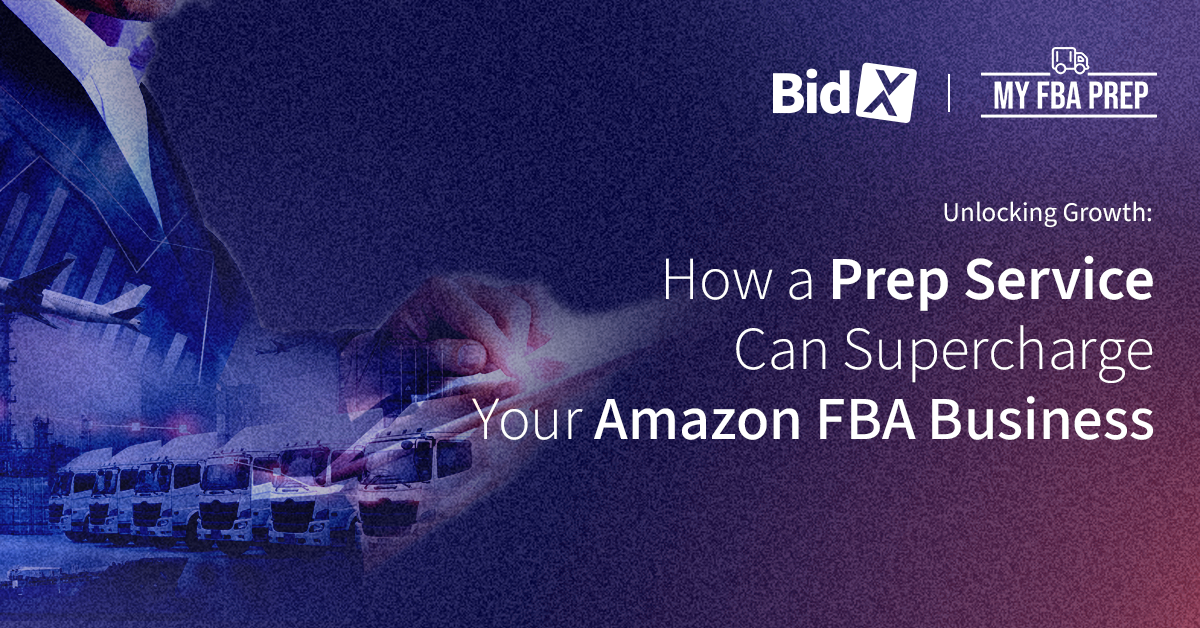Q4 Freight, Logistics, and Inventory: Comprehensive Guide for 2022
Q4 is approaching quickly, with increased seller fees, longer shipping wait times, clogged up supply chains, and—of course—the notorious and much-anticipated holiday rush.
Facing all of these challenges may seem daunting, but overcoming them strategically can give your brand a competitive edge when it comes to leveraging the Q4 shopping season.
In this article, we will cover:
- What does success look like in the final quarter fulfillment?
- A tactical guide to successful Q4 fulfillment
- How to win big this final quarter
What does success look like in the final quarter fulfillment?
As you set out on your Q4 prep journey, it’s helpful to know whether your strategies and tactics are effective for the challenges and circumstances your store faces. While every store’s barometer will be unique, some tell-tale signs your fulfillment, logistics, and inventory-related strategies are on the right track include:
- Reduced shipping costs
- Optimal stock levels across regions
- Replenishment stock is always in transit
- Limited stockouts
- On-time delivery to customers
- Low error rates
- Minimal product damage and recalls
A tactical guide to successful Q4 fulfillment
Stressed about the impending Q4 rush? Don’t be! The final quarter can be an exciting and money making season for your eCommerce brand when you have the right knowledge and time to execute on it. Let’s breakdown the keys areas to cover along with some essential do’s and don’ts:
Diversify your supply chain
If the pandemic has taught us anything, it’s the value of diversification. You should have multiple revenue streams, partners, and suppliers.
Instead of relying on just one manufacturer, or manufacturers from one region, it’s important to stretch your supply chain as far as it’ll go to keep a reliable stream of inventory for your consumers.
- Research and test new suppliers and manufacturers. Consider buying from two or more providers simultaneously throughout the final quarter to reduce the risk of all your inventory being delayed if one provider has production or shipping delays.
- Test and negotiate better freight and carrier options. Don’t feel tied to one shipping; diversify to reduce risk. For example, you could use air freight for lighter items and rail and road for heavier goods. Alternatively, you could opt for sea freight with multiple vessels. Discuss better rates with carriers and freight companies for commitments to larger volumes and higher quality service. For example, you could ask for tracked and signed shipments with insurance.
- Prepare for more expenses. With diversification comes growing pains. Expect to see some increases in price and minimum order quantities (MOQs). Prepare your budgets accordingly by working on increasing AOV and LTV.
- Forecast needed inventory and negotiate with higher MOQs for better pricing. Purchase buffer units in your business territory, considering how long it’ll take you to restock. Store goods in key locations so you always have access to stock.
Implement a hybrid fulfillment strategy
In line with our suggestion on diversification, we also suggest implementing a hybrid fulfillment strategy. This is where instead of relying on a single fulfillment partner or method (such as a 3PL, FBA, or your own in-house warehouse), you utilize a mix to cover all your bases.
- Find a 3PL that complements your existing network. For example, if you work with a 3PL, they should be able to work in tandem with your in-house or marketplace fulfillment. Even if a shipping carrier is experienced and has been trustworthy in the past, it’s too risky to depend on just them. Expand your options.
- Look for partners who play well with others. Similarly, you want to find a fulfillment partner that also works in tandem with other 3PLs. For example, a logistics company that can handle FBA prep in compliance with Amazon standards.
- Plan how you’ll handle global and multi-item shipments. Entering Q4 without planning for fulfilling international orders and multi-item orders, taking into account cost, time, and capacity, is risky. Know whether you’ll wait to gather goods at one warehouse and then ship or fulfill separately?
- Distribute your inventory. Spreading your inventory across your key sales regions to keep items as close as possible to demand. This helps speed up deliveries and mitigate any problems in case a warehouse slows operations for any reason.
Use bundles to stand out from the crowd
Bundles are an excellent holiday strategy, because they can help merchants manage inventory (bundling slow moving items with best sellers), introduce new items (bundling a new item as a bonus trial product), and enhance the customer experience (bundling items that consumers may need to improve their experience, but haven’t realized yet).
- Learn from the past. Look at what was a hit with your customers over the past few years. If you had a successful Easter calendar, you could create a Christmas version, incorporating your best-selling item. Investigate which bundles your competitors and brands outside your niche that serve your target audience. Find ways to put your own spin on them.
- Follow customer habits. Increase perceived value and average order values by bundling items that were frequently purchased together. Look for ways to upgrade existing top-performing products. For instance, you could offer a free gift or allow shoppers to create their own bundles for a lower cost.
- Create unique bundles. One of the biggest advantages of bundles is that they are unique. You get a unique SKU, and no other competitor offers the same thing, encouraging consumers to purchase from you instead of anyone else.
Create a system to capture sales from stockouts
Even with your best forecasts, they’re just forecasts. Educated guesses that put you on the right path but don’t guarantee success. So mistakes can and will happen. But with a system in place, you can turn would-be costly stockouts into a revenue-generating machines. Let’s look at some tasks to complete and things to avoid to turn stockouts into profits:
- Capture customer details from stockouts. You can set up backorders, waiting lists, and discounts to incentivize shoppers’ to push back their delivery dates at checkout.
- Protect your margins with a repricing and messaging system. Use these to slow down sales, buy time, and communicate your inventory status to customers, e.g., “Just 5 items left!”
- Use technology, giveaways, and competitions to make waiting for goods exciting rather than inconvenient and breed an air of exclusivity. For example, you could create a giveaway exclusively for people on your waiting list.
- Create a plan to manage back orders and stockouts with local and international suppliers. Each supplier should have KPIs to meet, and you should incentivize hitting them.
- Provide alternatives in the event of a stockout. Suggest alternatives and highlight your waitlist. Then follow through with back-in-stock reminders.
- Stay in communication with your customers. Aim to get back in stock ASAP and be transparent with your customers about timeframes so they can make informed decisions on whether to wait or not.
Reduce returns by promoting gift cards as presents
Everyone knows someone difficult to buy gifts for, and sometimes people get it wrong; these scenarios can lead to sky-high returns for your eCommerce store. Luckily, you can use giftcards to combat returns and give buyers and gift card recipients more flexibility in your store.
- Provide generous redemption periods (1-2 years). Some shoppers take a while to decide on what to buy, while others prefer to use their gift cards later on in the year. Give them the space to do so to get into the shopper’s good graces.
- Incentivize a voucher instead of a refund with discounts or perks. E.g., get 10% off your next shop if you opt for a return coupon
- Give shoppers multiple gift card options. Offer paper or online vouchers to complement the different ways shoppers like to gift.
- Make it easy to redeem. Have a simple setup, whether it’s a pin code or QR code redemption.
Set up a memorable returns policy
Shoppers, retailers, and e-tailers have one thing in common; they all hate returns. Two-thirds of consumers say it’s the worst part of buying goods. As an eCommerce brand, you can use this fact to your advantage by creating a positive returns experience.
- Offer extended return periods from October to the end of January. Also, communicate with shoppers that your returns may take longer than usual due to the high order volumes. This will give busy shoppers the chance to decide what their keeping and you more time to process returns.
- Create an ultra-fast, paperless returns process. You can even take page out brands like Amazon and SheIn’s books who have started to refund as soon as the customer drops goods off at the return postage point. Also, use return shipping costs to weigh up whether it’s worth the customer returning or issuing the customer a refund.
- Offer multiple ways for shoppers to return goods and price them into your goods. A survey found that 79% of shoppers value free returns. Some favorite return methods include in-store, courier pickup, lockers, and designated drop-off points (e.g., in a supermarket).
- Use reliable carriers for returns. Work with a carrier that can provide tracking to you and your customers.
- Return funds quickly to customers. Look at your team’s workload and set realistic targets for processing returns accordingly.
How to win big this final quarter
As the economists put it, “the era of unpredictability is not going away.” As an eCommerce brand, you’ll need a robust plan, razor-sharp execution, and a solid understanding of global supply chain issues to come out on top this Q4.
Take your store’s unique circumstances and requirements into account when crafting your Q4 fulfillment, logistics, and inventory acquisition strategies. And don’t forget to stress test it to find holes and solutions to them.
Soon you’ll have a winning Q4 fulfillment strategy that can handle whatever comes its way and make serious cash in the process.
Need help with your Q4 fulfillment strategy? Look no further than MyFBAPrep.
About the Author
Rachel Go is the marketing director of MyFBAPrep, the leading eCommerce warehouse network for Amazon aggregators, enterprise-level brands and top Amazon sellers. Operating a global network of more than 50 warehouses and seven-million-square-feet of operating warehouse space, MyFBAPrep offers a full suite of ecommerce 3PL services including Amazon wholesale and private label, direct-to-consumer (DTC) fulfillment, and B2B retail. Powered by its SaaS technology platform Preptopia™, sellers get access to unified billing, analytics, business intelligence reporting tools and real-time inventory views across multiple warehouses in the network. The company provides FBA Prep automation, modern robotics item picking, and a dedicated account management team. Based in Coral Springs, Florida, MyFBAPrep moves over $1 billion in Gross Merchandise Value (GMV) and processes over 10-million units annually. For more information, visit MyFBAPrep.com.



-2.jpg)

